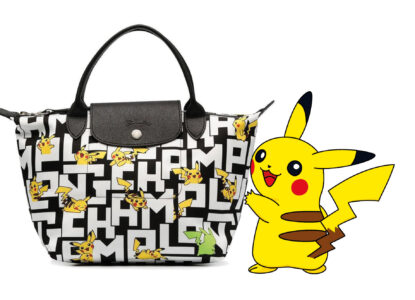
luxury conquers the no canal
Feared by luxury houses at the beginning, making most of them late adopters, the digital world is now a major and unavoidable axis of their ...
Our Expertise

« Marcom », born from the combination of Marketing and Communication, long been used to describe these activities, embodies one of the new organizational trends regularly encountered during our missions.
By grouping the two areas of expertise under the same responsibility, the advertiser is able to ensure that brand investments and investments in the product, promotion, traffic and activation are coordinated. We thus find marketing profiles at the head of communication, the reverse being rarer, the activities of this department are rather driven by experts from the product or even the business, more often than by brand experts.
This phenomenon is amplified by the data available and tracking activities, which offer brands a quantifiable and measurable « communication/marketing action » on their launches and sales.
The marketing and communication director is thus becoming a major business pivot, sometimes stepping on the toes of the sales director, who would also like to manage his activation actions.
In many companies we see a double activation plan. Some have divided the scope by working by destination: the sales manager handles the regional and the marcom director the national. Merchandising is sometimes underneath commerce, and it becomes difficult to draw a clear line between commerce and marketing and to define a clear leadership for the actions. It is easy to imagine the tricky position of the product managers and the extent of the coordination/validation that all this requires. Some organizations, anxious to work on their brand capital, isolate the scope of PR from the brand and corporate and place it directly under the CEO.
We see this as having complex consequences for the unity of the brand and the efficiency of the budget spent. The mobilization of two agencies can be common : one for the brand and one for the product may be one of the consequences. Consumers only recognize one brand, it is key not to blur their perception of the DNA of « their » brand, which will only dilute the strength of its footprint. Brands that are sliced up to satisfy issues of perimeter and internal organization will rarely win.
It is not uncommon to see a 360° media plan with a long-planned brand campaign, requiring heavy creative investment, being halted to make way for a promotional activation campaign, a short-term and tactical response to disappointing sales figures. Short term business requirements often collide with the longer-term brand discourse.
Is this a problem for the brand’s durability and the attachment of its consumers?
In the long term, probably so, because brands exist through their core value proposition, their ability to create something unique and differentiating, offering that little bit of irrationality that gives them the opportunity to be chosen, chosen again and again. Customers choose a brand with their heart.
Brand preference, the dream of marketers, cannot be obtained in the long term by promotional actions. It is widely established (cf. the numerous publications of the Ehrenberg Institute for example) that promotions do not fundamentally modify the loyalty of brand customers, who are happy to find discounts on brands that they follow and buy regularly but that promotions struggle to fundamentally influence in their behaviour; nor do they generate significant growth in the number of new customers.
Furthermore, brands can lose sight of the cost of acquiring new customers, when the base of loyal customers, consumers who have become « loyal zappers », cost 2-3-4 times cheaper to keep according to observed retention times and average baskets.
Loyalty and continuity being the sinews of war, our marketers are mobilized to think of your lasting immersion within their brand and to activate the innumerable marketing solutions to retain, immerse and make the customer experience a long, quiet funnel.
So will your next marcom director be an algorithm ?
This multitude of data and opportunities to reach the consumer makes communication a « complex technical » process that requires complete omni-channel knowledge and a real performance culture.
We mustn’t forget the vision. This beautiful concept that gives nerve to everything you put into these numerous brands. This vision, this strength of discourse, this legitimacy, which beyond the price and the immediate effect anchors brands in tomorrow.
It is a loyalty contract between customers and their favorite brands. But is it useful? In today’s immediate society where today matters the most? As one piece of information chases another and memories are short, what about brands, durability and transmission? Are the great men and women of communication to be put away? Will they re-emerge when we are saturated with « call to action » and activation plans proposed by algorithms ?

Feared by luxury houses at the beginning, making most of them late adopters, the digital world is now a major and unavoidable axis of their ...

Scanning a barcode to know the composition of a product, reading other customers before choosing a restaurant, or comparing airfare prices, ...

From Christie’s sale of a piece of digital art for $69 million, to Jack Dorsey’s (co-founder of the Twitter platform) first twee...